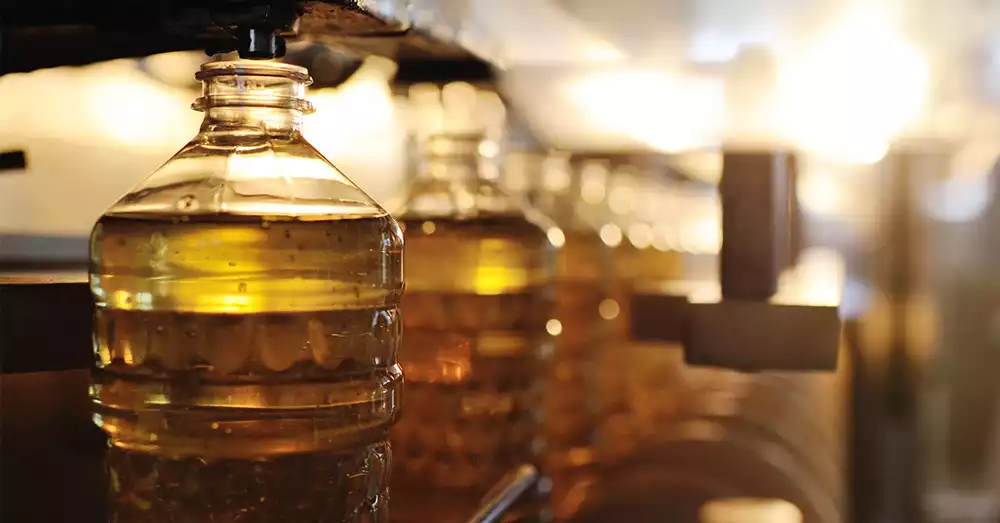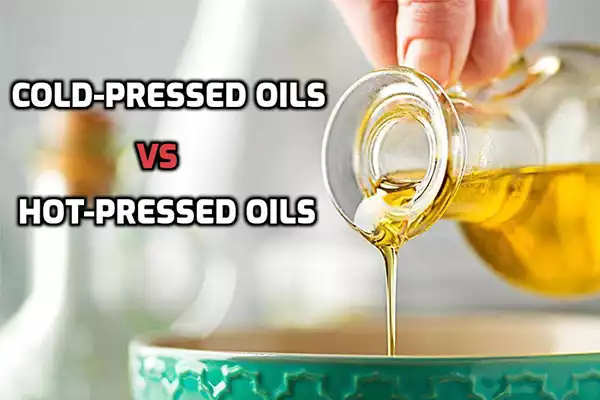
Introdution
There are two ways to extract edible oil on the market, which are pressing and extraction. However, pressing divides hot pressing and cold pressing. Using different extraction methods, the quality of the final edible oil will also be different. Therefore, we need to understand the difference between hot pressing and cold pressing. In this comparison guide, we will explore the differences between hot pressed oil and cold pressed oil from many aspects such as pressing method, nutrient retention, oil characteristics, etc.
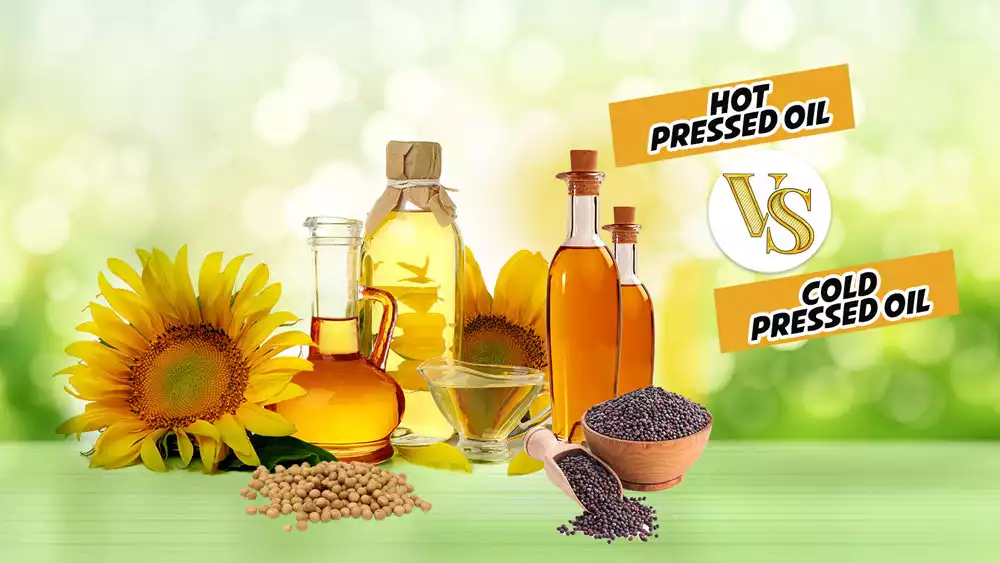
Hot press vs cold pressed oil
Cold Pressed Oil Vs Hot Pressed Oil: Pressing Method
Cold pressing: Cold pressing is a traditional way of extracting vegetable oil, also known as mechanical pressing. This method refers to the process in which the oil is not heated (such as steaming or frying) before pressing. It is generally sent to the oil press for pressing at an environment below 60°C, and the oil is finally extracted. (Read more: cold pressed peanut oil >>)
Hot pressing: As the name suggests, hot pressing refers to the process in which the oil is fried or steamed at high temperature (changes occur inside the oil: such as destroying oil cells, promoting protein denaturation, reducing oil viscosity, etc.), and then entering the oil press for pressing.
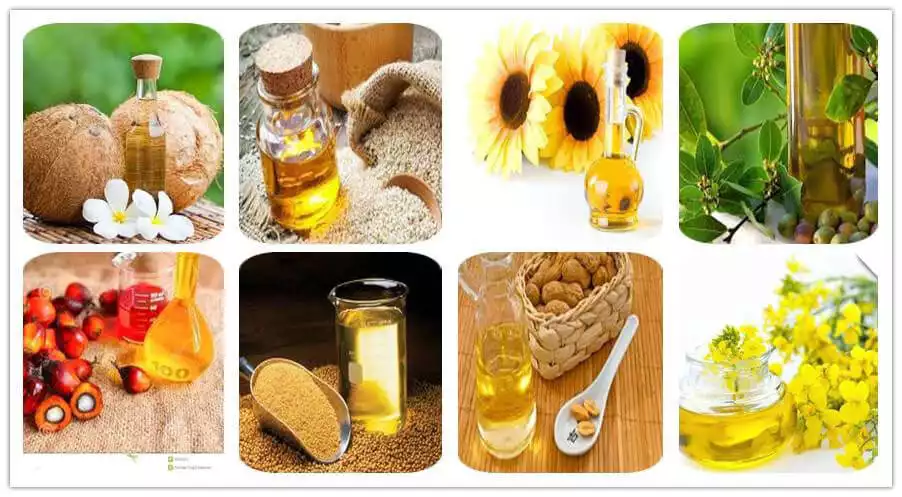
Cold pressed vs hot pressed oil
Cold Pressed Vs Hot Pressed Oil: Nutrient Retention
Hot pressing: Although hot pressing can increase the oil yield, high-temperature treatment will cause some bioactive substances in the oil (such as vitamin E, sterols, carotenoids, etc.) to be lost during the pressing process, thereby reducing the nutritional value of the oil.
Cold pressing: Cold pressing can completely preserve the physiologically active substances in the oil, such as vitamin E (with anti-aging function), and sterols (with skin-building effect), and enhance human metabolic function. These ingredients benefit human health, so cold-pressed oil has higher nutritional value than hot-pressed oil. (Read more: cold pressed sunflower oil >>)
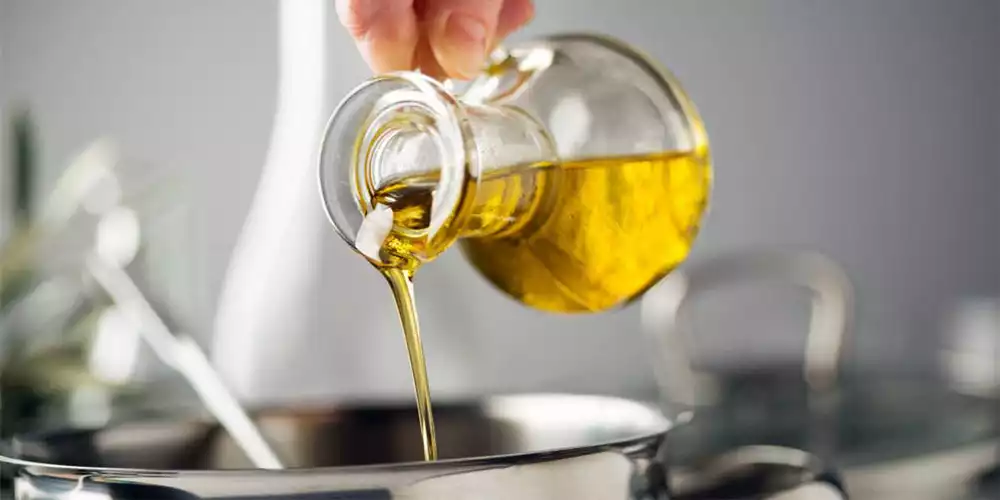
Cold press vs hot pressed oil
Cold Pressed Vs Hot Pressed Oil: Oil Characteristics
Hot pressed oil:
- Hot pressed oil has a very fragrant smell.
- Hot pressing can improve the yield of oil and the utilization rate of resources.
- Due to the effect of high temperature, the color of hot pressed oil is lighter yellow and the clarity is higher.
- High temperature treatment effectively kills some microorganisms and enzyme activity and extends the oil’s shelf life.
Cold pressed oil:
- Cold pressed seeds are not roasting, so they have a poor smell and the oil is not fragrant.
- Edible oil extracted by cold pressing is generally turbid, dark yellow, or dark green, and is rich in natural plant nutrients.
- Cold pressed oil characterizes a mellow taste and unique flavor, suitable for raw food and cooking.
- The oil yield of cold pressed oil is low and there is a certain amount of sediment.
Cold Pressed Vs Hot Pressed Oil: Market Value
Hot-pressed oil: Due to its high oil yield and relatively simple process, hot-pressed oil has a high cost-effectiveness in the market. However, as consumers’ health awareness increases, the demand for high-quality, high-nutritional edible oils is also increasing.
Cold-pressed oil: Cold-pressed oil is favored because its nutrients are intact and it has pure natural characteristics. Although the cold-pressing method has a lower oil yield, the price of cold-pressed oil is usually higher than that of hot-pressed oil. However, its market value continues to grow with the improvement of consumers’ health awareness.
Conclusion
In conclusion, different press methods will affect the quality of edible oil. Cold-pressed oil retains the natural ingredients and aroma of the oil. However, hot-pressed oil increases the yield of oil, with a lighter color but a relatively lower aroma and nutritional value. Therefore, when we choose the method of edible oil extraction, we need to consider the pros and cons of different extraction methods and make a wise choice.
External Resources:
- Indiatimes: https://timesofindia.indiatimes.com/life-style/food-news/what-is-the-difference-between-cold-pressed-and-hot-pressed-oil/photostory/72955572.cms
- Ambuja Solvex Pvt: https://www.ambujasolvex.com/blog/the-comparison-of-cold-pressed-and-hot-pressed-oil/
- Quora: https://www.quora.com/What-is-the-difference-between-cold-pressed-oils-and-hot-pressed-oils
Get your best price
- Engineer quick quote
- The overall delivery speed is fast
- Financial choice
- Low installation costs and cost savings
30 years+ of oil mill plant R&D
More than 56 innovative technologies

